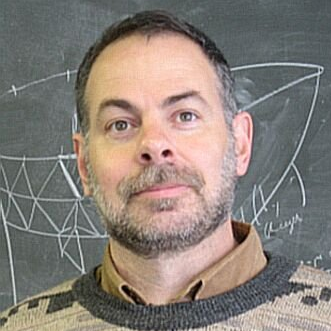Discrete Geometry and its Applications
A special issue of Axioms (ISSN 2075-1680).
Deadline for manuscript submissions: closed (30 June 2017) | Viewed by 30296
Special Issue Editors
Interests: discrete differential geometry and its applications; mathematical imaging and vision; complex networks; quasi-conformal mappings and applications; topology and its applications
Special Issues, Collections and Topics in MDPI journals
Interests: computer graphics; computer vision; visualization; geometric modelling; networking
Special Issues, Collections and Topics in MDPI journals
Special Issue Information
Dear Colleagues,
With the advent of the “digital age”, discrete geometry has been developed and recognized as a self-standing, multifaceted, active and important field of study. A special place is deserved for the sub-field of discrete differential geometry; here “discrete” means that one does not merely restrict oneself to approximations, but rather operates on a deeper level, by considering various possible discretizations of such classical notions as curvature, geodesics and connection, to mention just some of the most basic and essential ones. Papers covering other interesting and important branches of discrete geometry, such as digital geometry and convex geometry, with their multiple and far-reaching applications, are also most welcome.
The ensuing applications are manifold, and range from sampling and reconstruction to segmentation, and from smoothing and denoising to registration and modeling, as well as DNA microarray analyses and neural networks understanding. Moreover, they transcend their specific boundaries (already far from narrow), and have—as already suggested above—applications in medical imaging, complex networks, pattern recognition, manifold learning, mathematical biology and robotics.
It is the goal of this Special Issue to explore, through its constituting papers, the various, dynamic and ever-evolving fields of study, both in its more theoretical facets, as well as its cornucopia of applications.
Prof. Emil Saucan
Prof. David Gu
Guest Editors
Manuscript Submission Information
Manuscripts should be submitted online at www.mdpi.com by registering and logging in to this website. Once you are registered, click here to go to the submission form. Manuscripts can be submitted until the deadline. All submissions that pass pre-check are peer-reviewed. Accepted papers will be published continuously in the journal (as soon as accepted) and will be listed together on the special issue website. Research articles, review articles as well as short communications are invited. For planned papers, a title and short abstract (about 100 words) can be sent to the Editorial Office for announcement on this website.
Submitted manuscripts should not have been published previously, nor be under consideration for publication elsewhere (except conference proceedings papers). All manuscripts are thoroughly refereed through a single-blind peer-review process. A guide for authors and other relevant information for submission of manuscripts is available on the Instructions for Authors page. Axioms is an international peer-reviewed open access monthly journal published by MDPI.
Please visit the Instructions for Authors page before submitting a manuscript. The Article Processing Charge (APC) for publication in this open access journal is 2400 CHF (Swiss Francs). Submitted papers should be well formatted and use good English. Authors may use MDPI's English editing service prior to publication or during author revisions.
Keywords
- discrete (Ricci) curvature
- geometric flows
- convex geometry
- digital geometryimaging
- graphics
- complex networks
- smoothing
- denoising
- registration
- segmentation





